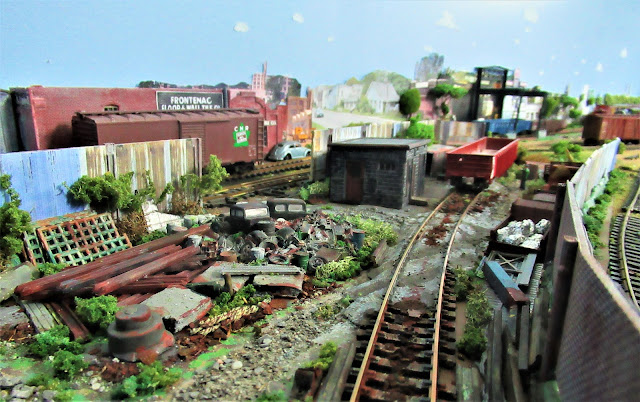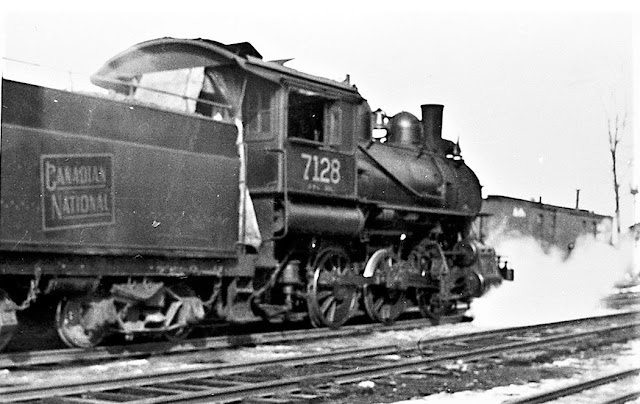There it was, tucked out of sight in the very last file in one of five boxes in the Queen's University Archives' Kingston Shipyards Collection. I found this tiny, well-worn notebook stamped 'Kingston Shipbuilding Co. Limited' on the back cover, and handwritten 'Compensation Records 25/3/42-18/6/43" on its front cover. It contained handwritten notes on each injury sustained by a worker at the shipyards, during the busy wartime period of naval trawler and corvette construction here.
The write-up of each incident included the worker's name, age and home address, date and time of the incident, and a short description of the incident. Sometimes there are mentions of layoff, return to work and other coded notes that aren't explained.
What I found most amazing was the rate of injury - averaging three per day! Also the ages (14 to 72 years) and the spectrum of positions of the injured workers. Though clerks and foremen were sometimes mentioned, the vast majority were listed as caulkers, plate-hangers, chippers, bolter-ups [bolters-up?], burners, slingers, drillers, stage-builders, cleaner-ups and those directly involved in rivetting: heaters, holder-ons, and passers. Forged rivets (of cyndrical construction with a length depending on the thickness of the steel to be rivetted together, capped by a 'factory head') were heated in small forges to approximately 1000 degrees Celsius, bright cherry-red, then passed/thrown into a conical bucket, from which they were taken with tongs and inserted into holes drilled into the sheet steel. The unformed end of the rivet was hammered to close the joint. As the rivet cooled, it contracted and squeezed the joint together tightly.
By modern standards, this rate of workplace injury would probably be scandalous, resulting in a Ministry of Labour investigation, continuous-improvement implementation and much red tape. Some workers had more than one incident within the span of this notebook's dates. There are mentions of goggles being worn, yet there is a high rate of eye injuries. I don't know how seriously injury prevention and industrial workplace safety was taken during wartime, beyond the recording of the incidents. Lost-time would be even more acute while skilled labour was at a premium, and the urgency of shipbuilding was paramount.

I didn't count the number of incidents recorded in this one notebook, but there were hundreds! I've transcribed a few as-written to include in this post. The majority of injuries were welders' flashes to eyes, slips and falls, wood splinters, finger lacerations, stepping into manholes, reaming and rivetting injuries, and crush injuries while manoeuvering heavy steel shapes and sheets above and below deck. These give us a glimpse into the wartime world of Kingston heavy industry!
Billy Bois 14 - Passer - 367 Montreal St
15/4/42 3:00 p.m.
As he was catching hot rivets, one hit bucket and glanced hit on chin causing burn. Sent to Dr J. Campbell
Frank Stephenson 15 - Passer - 190 Rideau St
1/5/42 8:30 a.m.
He was catching rivets and was about to pass it to riveter and fell in a manhole injuring his left side. Dr Campbell
Russell Woodcock 19 - Holder-On - 458 Barrie St
5/6/42 8:00 a.m.
He was bolting frames on boat and a piece of rust fell off ceiling in left eye. Dr Carp.
Bob Carron 16 - Passer Boy - 268 Wellington St
8/6/42 3:45 p.m.
He was passing rivets a chip of hot slag from welder flew into his left eye. Dr Carp.
Bill Bois 14 - Rivet Passer - 412 Montreal St
10/6/42 12:00 a.m.
He was passing rivets and scale off rivet flew into his right eye. Dr F. Rutherford.
Raymond Kotowych 20 - Welder - 41 Hickson Ave
25/7/42 3:00 p.m.
He was welding and reamers working above him steel fell down into glove and worked into his right arm. Dr Campbell.
Gerald Stevenson 15 - Passer - Sydenham
31/8/42 8:00 a.m.
He was catching rivets on boat, a hot rivet bounced out of bucket fell into his glove causing burn on right hand. Reported as above. Dr Morrison.
Wm Geoghengan 72 - Foreman - 69 Colborne St
3/11/42 6:30 a.m.
He was walking to powerhouse and tripped over cable falling causing injury to ribs on left side. Dr Campbell.
Lyle Hannah - 28 - Slinger - Cataraqui
29/11/42 10:00 a.m.
He was putting angle iron on slings in flat car the sling slipped causing angle iron to fall on his left foot. Dr Campbell.
Robert Hewitt - 42 - Riveter - 160A Bagot St
2/1/43 1:30 p.m.
While he was riveting passer boy missed bucket with rivet and hit him on nose. Laceration. Dr Regan.
UPDATE: Bill Godkin kindly sent along this additional information regarding rivetting:
It took a small agile man or boy to travel through the tanks passing rivets. In the tanks between the hull and floor of the hold there were walls going from side to side. They had openings in them so you could get from one end of the ship to the other. The [furnace] for heating the rivets would be located beside a manhole in one of the holds. The hot rivet was dropped down through the manhole to the passer below. He turned, and using his tongs, picked the rivet out of the cone shaped bucket and tossed it to the guy hanging through the opening in the next bulkhead until it reached the passer at the seam being repaired. That passer placed the rivet into the hole in the seam and the holder then rammed it home with the holding tool. The holding tool was a solid block of steel about3 by 5 by 5 [shade smaller then that] with a handle on it about 16" long ending in a big circle so he could grab it with two hands and put all of his strength on it so the riveter could flatten it on the outside of the hull.
Bill also sent more information about repairing rivets on a ship in drydock:
A ship was brought into the dry dock, and once it was settled on the cradles and the dock pumped dry it underwent an inspection by the government inspector. The ballast tanks, which ran the full length of the ship, were filled with water then pressurized. The inspector went seam by seam inspecting the rivets and if any were leaking.he circled them with yellow crayon. Then the manhole covers were removed, and starting at the front hold a firehose was used to play water up and down the first seam from inside the hold. Once the inspector had finished that seam he would bang on the hull with his hammer and the crew moved to the next seam.. You might be working with hip waders in a foot of water, and don't forget the open manholes, as once in a while someone would step in one. Once the test was complete, the ship is drained and usually it' was the next day that the work began replacing the circled rivets. First, a burner used a cutting torch to burn off the outside flared part of the rivet. Then a man using an air hammer punched out the rest of the rivet. Then the two-man reamer crew reamed out the hole. Once a seam or two are done the rivet crew started replacing the rivets. So you are down in the tanks passing rivets, and they are burning out rivets and punching them out, and reaming them out all around you!
.JPG)









.JPG)



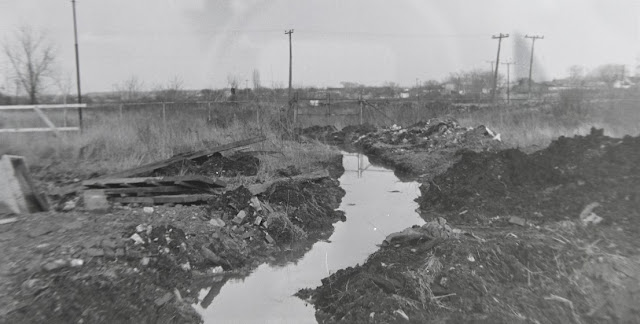



.JPG)
.JPG)
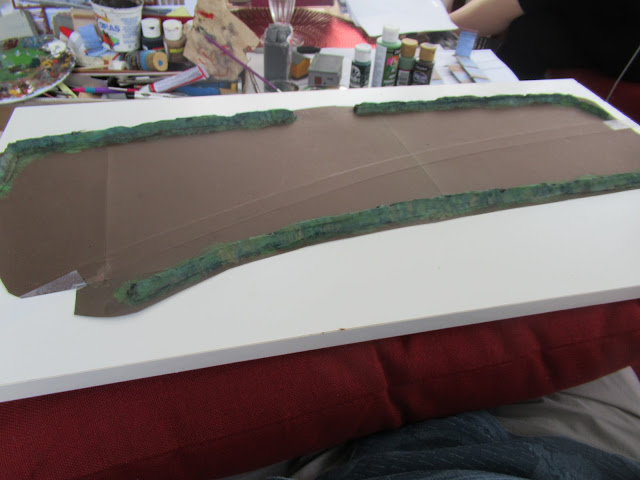
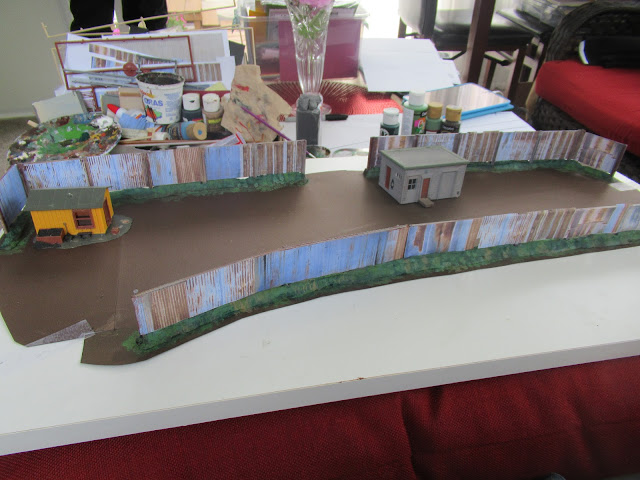
.JPG)






.JPG)
.JPG)
.JPG)


